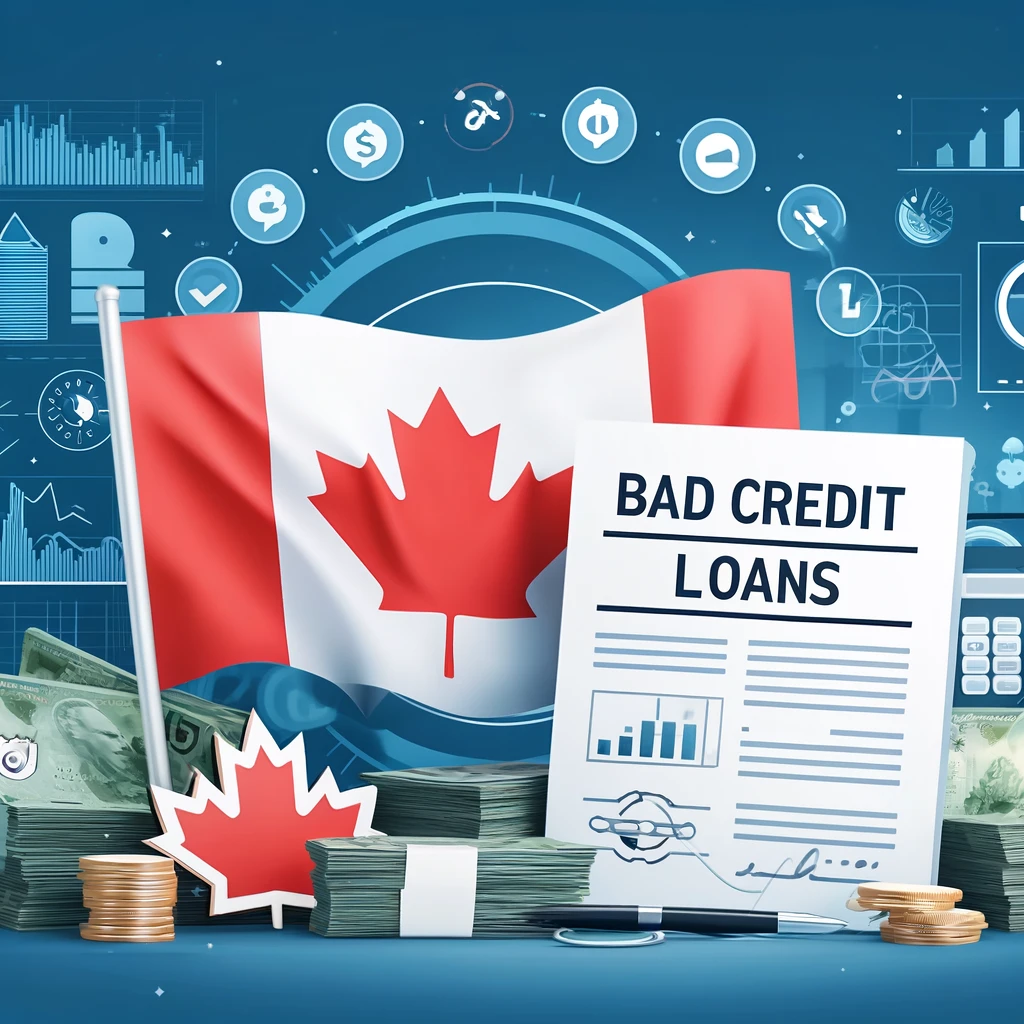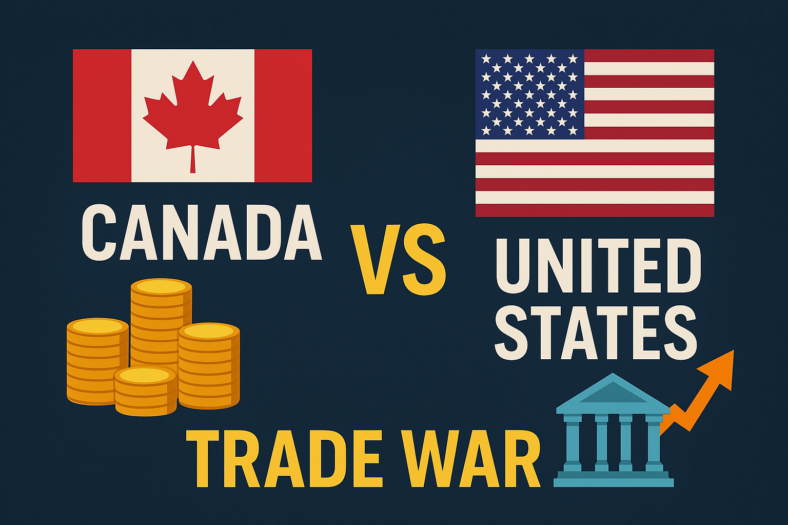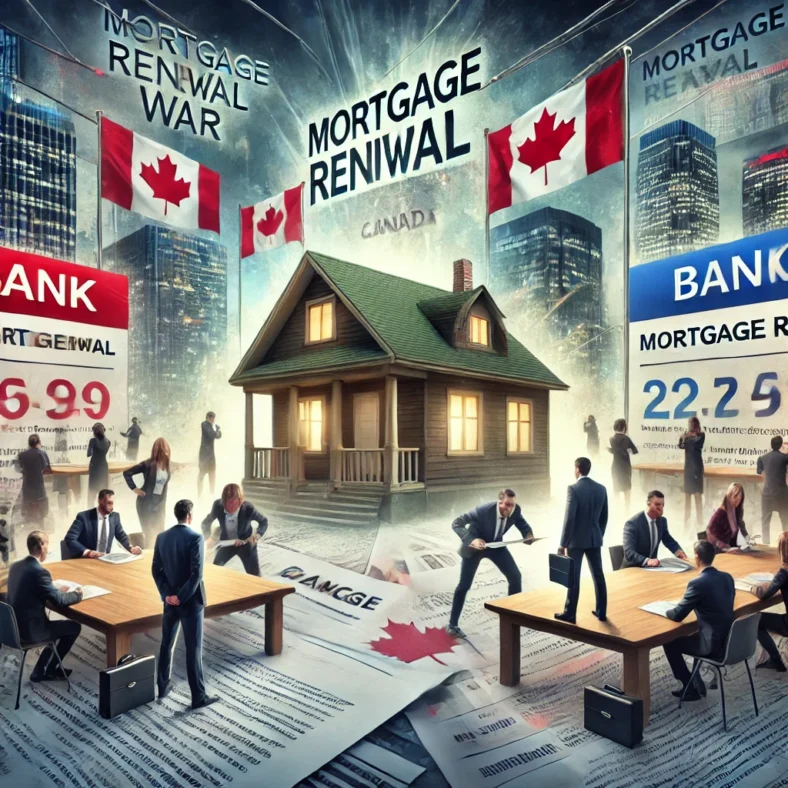Bad credit loans are specifically designed for individuals with less-than-perfect credit scores. These loans provide a lifeline for people who might otherwise be turned away by traditional banks and financial institutions. They can help cover emergency expenses, consolidate debt, or make necessary purchases while also providing an opportunity to rebuild credit.
The landscape of bad credit loans in Canada is diverse, encompassing a range of lenders, loan types, and terms. This guide aims to navigate this complex terrain, offering a comprehensive overview of the best bad credit loans available in Canada. We will delve into the types of loans available, the top lenders in this space, and critical considerations for borrowers. Additionally, we will explore strategies for improving your credit score and managing your finances effectively.
Best Loans – Our Top Picks
What are bad credit loans and how do they work?
Bad credit loans are financial products specifically designed for individuals who have a low credit score, typically below 600. These loans provide a means for people with poor credit histories to access funds that might otherwise be unavailable through traditional lending channels, such as banks or credit unions. They cater to a segment of the population that is often underserved and offer a way to manage financial emergencies, consolidate debt, or make necessary purchases.
How Do Bad Credit Loans Work?
The mechanics of bad credit loans involve several key components:
1. Application Process:
The application process for bad credit loans is generally straightforward and can often be completed online. Borrowers need to provide personal information, proof of income, and details about their financial situation. Lenders use this information to assess the borrower’s ability to repay the loan.
2. Approval Criteria:
Unlike traditional loans, where a high credit score is a critical factor, bad credit loan approval depends more on the borrower’s income, employment status, and ability to repay the loan. While credit history is considered, it is not the sole determinant.
3. Interest Rates:
Interest rates on bad credit loans are typically higher than those on conventional loans. This is because lenders offset the higher risk of lending to individuals with poor credit by charging more in interest. The Annual Percentage Rate (APR) can vary significantly depending on the lender and the borrower’s financial profile.
4. Loan Amounts and Terms:
Bad credit loans can range from small, short-term amounts (e.g., $500) to larger, longer-term amounts (e.g., $10,000 or more). The repayment terms also vary, with some loans requiring repayment within a few weeks to a few months, while others may have terms extending several years.
5. Repayment:
Repayment schedules for bad credit loans can be weekly, bi-weekly, or monthly. Some loans, like payday loans, require a lump-sum repayment on the borrower’s next payday. Others, like installment loans, spread the payments over a set period, making them more manageable.
Pros and cons of bad credit loans
Bad credit loans can be a valuable resource for individuals facing financial challenges due to a poor credit score. However, like any financial product, they come with both advantages and disadvantages. Understanding these pros and cons is crucial for borrowers to make informed decisions about whether a bad credit loan is the right choice for their needs.
Pros:
Accessibility: Bad credit loans provide access to funds for individuals who may be rejected by traditional lenders due to their credit history. This can be particularly beneficial during emergencies or when unexpected expenses arise.
Credit Improvement: Timely repayment of a bad credit loan can help improve the borrower’s credit score over time. By demonstrating responsible borrowing behavior, such as making on-time payments, borrowers can rebuild their creditworthiness.
Diverse Options: Bad credit loans come in various forms, including secured and unsecured loans, installment loans, payday loans, and guarantor loans. This diversity allows borrowers to choose the option that best fits their financial situation and needs.
Quick Approval: Many bad credit lenders offer fast approval processes, allowing borrowers to access funds quickly. This can be essential in situations where time is of the essence, such as covering urgent medical expenses or repairing a vehicle.
Flexible Use of Funds: Borrowers can use the funds from a bad credit loan for any purpose, whether it’s consolidating debt, covering medical bills, making home improvements, or addressing other financial needs.
Cons:
Higher Interest Rates: Bad credit loans often come with higher interest rates compared to traditional loans. Lenders charge higher rates to compensate for the increased risk of lending to individuals with poor credit scores. This can result in higher overall borrowing costs.
Fees and Penalties: Borrowers should be aware of additional fees and penalties associated with bad credit loans, such as origination fees, late payment fees, and prepayment penalties. These extra costs can add up and increase the total repayment amount.
Risk of Debt Cycle: Mismanagement of a bad credit loan can lead to a cycle of debt, where borrowers continuously borrow to cover existing debts, resulting in a worsening financial situation. Borrowers should carefully consider their ability to repay the loan and avoid overextending themselves financially.
Limited Loan Amounts: Due to the increased risk associated with bad credit loans, lenders may impose lower maximum loan amounts compared to traditional loans. Borrowers may find it challenging to secure the full amount they need to address their financial needs.
Potential for Predatory Lending: Some lenders in the bad credit loan market engage in predatory practices, taking advantage of vulnerable borrowers with deceptive terms and high fees. Borrowers should thoroughly research lenders and read the terms and conditions carefully to avoid falling victim to predatory lending.
While bad credit loans can provide a lifeline for individuals with poor credit scores, they also come with inherent risks and costs. Borrowers should carefully weigh the pros and cons before deciding to take out a bad credit loan and ensure they understand the terms and conditions fully. By doing so, borrowers can make informed decisions that align with their financial goals and circumstances.
Types of bad credit loans available in Canada
In Canada, individuals with poor credit scores have access to various types of bad credit loans tailored to their specific needs and financial situations. These loans cater to different circumstances and borrowing preferences, offering flexibility and options where traditional lenders may decline. Here are some of the most common types of bad credit loans available in Canada:
Secured Loans:
- Description: Secured loans require collateral, such as a vehicle, home, or other valuable assets, to secure the loan. This collateral reduces the lender’s risk, making it easier for borrowers with bad credit to qualify and potentially obtain more favorable terms.
- Features: Lower interest rates, higher loan amounts, longer repayment terms.
- Considerations: Borrowers risk losing the collateral if they fail to repay the loan.
Unsecured Loans:
- Description: Unsecured loans do not require collateral, relying instead on the borrower’s creditworthiness and income to secure the loan. These loans are typically more accessible than secured loans but may come with higher interest rates and stricter terms.
- Features: No collateral required, faster approval process.
- Considerations: Higher interest rates, lower loan amounts, shorter repayment terms.
Payday Loans:
- Description: Payday loans are short-term loans designed to provide quick cash to borrowers until their next paycheck. These loans are usually for small amounts and come with high-interest rates and fees.
- Features: Quick approval process, no credit check required, accessible to individuals with poor credit.
- Considerations: High-interest rates, short repayment terms, risk of falling into a cycle of debt.
Installment Loans:
- Description: Installment loans allow borrowers to repay the loan over a set period with fixed monthly payments. These loans offer more manageable repayment terms compared to payday loans and are available to individuals with bad credit.
- Features: Fixed monthly payments, longer repayment terms, predictable repayment schedule.
- Considerations: Higher interest rates compared to traditional loans, potential for prepayment penalties.
Guarantor Loans:
- Description: Guarantor loans involve a third party (the guarantor) who agrees to repay the loan if the borrower defaults. These loans are less risky for lenders, making them more accessible to borrowers with bad credit.
- Features: Higher approval rates, potentially lower interest rates, larger loan amounts.
- Considerations: Finding a suitable guarantor may be challenging, risk of strain on the guarantor’s relationship with the borrower.
Credit Builder Loans:
- Description: Credit builder loans are designed to help individuals with poor credit scores improve their creditworthiness over time. These loans typically have lower loan amounts, and the funds are held in a savings account until the loan is repaid.
- Features: Helps build credit, lower risk for lenders.
- Considerations: Limited loan amounts, funds are inaccessible until the loan is repaid.
These are some of the main types of bad credit loans available in Canada. Each type has its own features, benefits, and considerations, so borrowers should carefully assess their financial needs and circumstances before choosing the most suitable option. Additionally, it’s essential to research lenders thoroughly and compare terms to ensure borrowers get the best possible deal.
How to find and choose the best bad credit loan
Finding and choosing the best bad credit loan requires careful consideration of various factors to ensure that the loan meets your financial needs while minimizing costs and risks. Here’s a step-by-step guide to help you find and choose the best bad credit loan in Canada:
1. Assess Your Financial Situation:
Before applying for a bad credit loan, take stock of your financial situation. Determine how much you need to borrow, your ability to repay the loan, and your credit score. Understanding your financial needs and limitations will help you narrow down your options and choose a loan that fits your circumstances.
2. Research Lenders:
Explore the lending landscape to identify reputable lenders specializing in bad credit loans. Look for lenders with positive customer reviews, transparent terms and conditions, and accreditation from regulatory bodies. Consider both traditional financial institutions and alternative lenders, such as online lenders and credit unions.
3. Compare Loan Options:
Once you’ve compiled a list of potential lenders, compare the loan options they offer. Pay attention to key factors such as interest rates, fees, loan amounts, repayment terms, and eligibility criteria. Use online comparison tools or request quotes from multiple lenders to assess the overall cost and affordability of each loan.
4. Understand the Terms and Conditions:
Thoroughly review the terms and conditions of each loan before making a decision. Pay close attention to the interest rate, APR, repayment schedule, fees (e.g., origination fees, late payment fees), and any additional charges. Ensure that you understand all aspects of the loan to avoid surprises or hidden costs later on.
5. Consider Collateral:
Depending on your preference and financial situation, you may opt for a secured or unsecured bad credit loan. Secured loans require collateral, such as a vehicle or property, while unsecured loans do not. Consider whether you’re comfortable pledging collateral and weigh the associated risks and benefits of each option.
6. Evaluate Customer Support:
Assess the quality of customer support offered by each lender. Consider factors such as responsiveness, accessibility (e.g., phone, email, live chat), and the availability of resources to address your queries or concerns. Choose a lender that provides excellent customer service and prioritizes your satisfaction.
7. Read Reviews and Testimonials:
Read reviews and testimonials from past customers to gauge the lender’s reputation and reliability. Look for feedback on the loan application process, loan terms, customer service, and overall experience. Avoid lenders with a history of complaints or negative reviews regarding deceptive practices or poor service.
8. Consider Loan Repayment Options:
Evaluate the flexibility of loan repayment options offered by each lender. Look for features such as the ability to make early repayments without penalties, customizable repayment schedules, and options for automatic payments. Choose a lender that offers repayment terms aligned with your financial goals and preferences.
9. Verify Lender Credentials:
Before finalizing your decision, verify the credentials and legitimacy of the lender. Ensure that the lender is licensed, registered, and compliant with relevant regulatory authorities in Canada. Beware of fraudulent lenders or scams targeting individuals with bad credit and prioritize your security and financial well-being.
10. Seek Professional Advice if Necessary:
If you’re unsure about which bad credit loan to choose or need assistance navigating the borrowing process, consider seeking advice from a financial advisor or credit counselor. These professionals can offer personalized guidance based on your individual circumstances and help you make informed decisions about your finances.
By following these steps and conducting thorough research, you can find and choose the best bad credit loan in Canada that aligns with your financial needs, goals, and circumstances. Remember to borrow responsibly and prioritize affordability and transparency when selecting a lender.
Common bad credit loan fees
When considering bad credit loans, it’s essential to be aware of the various fees that may be associated with borrowing. These fees can significantly impact the overall cost of the loan and affect your repayment obligations. Here are some common fees you may encounter when taking out a bad credit loan in Canada:
Origination Fee: This fee is charged by the lender for processing your loan application and is typically a percentage of the loan amount. It’s deducted from the loan proceeds before they’re disbursed to you.
Interest Charges: Interest is the cost of borrowing money and is charged by the lender based on the annual percentage rate (APR). Bad credit loans often come with higher interest rates than traditional loans to compensate for the increased risk to the lender.
Late Payment Fee: If you fail to make a loan payment by the due date, the lender may charge a late payment fee. This fee can vary depending on the lender and is typically a flat amount or a percentage of the overdue payment.
Prepayment Penalty: Some lenders impose a prepayment penalty if you repay the loan before the end of the loan term. This fee is designed to compensate the lender for the interest income they lose when you pay off the loan early.
Non-Sufficient Funds (NSF) Fee: If you make a loan payment that is returned due to insufficient funds in your bank account, the lender may charge an NSF fee. This fee is intended to cover the cost of processing the failed payment.
Loan Renewal or Extension Fee: If you’re unable to repay the loan by the original due date, some lenders may offer the option to renew or extend the loan term for an additional fee. This fee allows you to postpone repayment but can increase the total cost of the loan.
Loan Processing Fee: In addition to the origination fee, some lenders may charge a separate loan processing fee to cover administrative costs associated with processing your loan application.
Brokerage Fee: If you use a broker to help you find a bad credit loan, the broker may charge a fee for their services. This fee can be a flat amount or a percentage of the loan amount.
Early Repayment Fee: While not as common, some lenders may charge a fee if you repay the loan earlier than agreed upon in the loan contract. This fee is meant to compensate the lender for the interest income they would have earned if you had continued making payments according to the original schedule.
It’s essential to carefully review the terms and conditions of any bad credit loan offer to understand the fees involved fully. Be sure to factor these fees into your budget when determining the affordability of the loan and consider shopping around to find a lender that offers the most favorable fee structure for your needs.
Requirements to get a bad credit loan
The specific requirements to qualify for a bad credit loan can vary depending on the lender and the type of loan you’re applying for. However, there are some common criteria that lenders typically consider when evaluating applicants for bad credit loans in Canada. Here’s an overview of the typical requirements:
Minimum Age: You must be at least 18 years old to apply for a loan in Canada. Some lenders may have higher age requirements.
Proof of Identity: You’ll need to provide valid government-issued identification, such as a driver’s license, passport, or provincial ID card, to verify your identity.
Proof of Canadian Residency: Most lenders require borrowers to be Canadian residents or citizens. You may need to provide proof of residency, such as a utility bill or lease agreement.
Steady Income: Lenders typically require borrowers to have a steady source of income to demonstrate their ability to repay the loan. This income can come from employment, self-employment, government benefits, or other sources.
Employment Verification: If you’re employed, you may need to provide proof of employment, such as recent pay stubs or a letter from your employer. Some lenders may require you to have been employed for a minimum period, such as three to six months.
Bank Account: Most lenders require borrowers to have an active bank account in Canada. This is usually where the loan funds will be deposited, and it may also be used for automatic loan payments.
Credit History: While bad credit loans are designed for individuals with poor credit scores, some lenders may still consider your credit history as part of the application process. However, many bad credit lenders focus more on your current financial situation and ability to repay the loan than on your credit score.
Debt-to-Income Ratio: Lenders may evaluate your debt-to-income ratio, which compares your monthly debt payments to your monthly income. A lower ratio indicates that you have more disposable income available to repay the loan.
Collateral (for Secured Loans): If you’re applying for a secured bad credit loan, you may need to provide collateral, such as a vehicle or property, to secure the loan. The value of the collateral may affect the loan amount and terms.
Guarantor (for Guarantor Loans): If you’re applying for a guarantor loan, you’ll need to have a suitable guarantor who is willing to co-sign the loan agreement. The guarantor is responsible for repaying the loan if you default.
It’s important to note that meeting the minimum requirements does not guarantee loan approval. Lenders will assess your application based on various factors, including your creditworthiness, income, employment stability, and overall financial situation. Be prepared to provide documentation and information to support your application, and consider improving your financial profile where possible to increase your chances of approval. Additionally, comparing multiple lenders and loan options can help you find the best bad credit loan for your needs.
Bad credit loan alternatives
When faced with financial challenges and a poor credit score, securing a traditional loan may seem daunting. However, several alternatives to bad credit loans exist, offering viable options for obtaining funds and managing financial difficulties. Here are some alternatives to consider:
Credit Union Loans: Credit unions are member-owned financial institutions that often offer more flexible lending criteria than traditional banks. They may be more willing to work with individuals with poor credit scores and offer competitive interest rates on personal loans.
Secured Credit Cards: Secured credit cards require a security deposit, which serves as collateral against the credit limit. These cards can help rebuild credit by demonstrating responsible credit use, such as making on-time payments and maintaining low balances.
Credit Builder Loans: Credit builder loans are designed to help individuals establish or improve their credit history. Unlike traditional loans, the loan amount is typically deposited into a savings account or certificate of deposit (CD), and the borrower makes regular payments toward the loan. Once the loan is repaid, the funds are released, and the borrower can access them.
Peer-to-Peer Lending: Peer-to-peer lending platforms connect borrowers directly with individual investors willing to fund their loans. These platforms may have more lenient eligibility criteria and offer competitive interest rates compared to traditional lenders. Borrowers with poor credit scores may still qualify for peer-to-peer loans, depending on their financial profile and the platform’s requirements.
Family and Friends: Borrowing from family or friends can be a more flexible and affordable alternative to traditional loans. However, it’s essential to approach these arrangements with caution and establish clear terms and repayment plans to avoid straining relationships.
Salary Advances or Emergency Assistance Programs: Some employers offer salary advances or emergency assistance programs to employees facing financial difficulties. These programs provide short-term financial relief without the need for credit checks or interest payments.
Government Assistance Programs: Depending on your circumstances, you may be eligible for government assistance programs that provide financial support, such as unemployment benefits, housing assistance, or low-income loans. These programs vary by location and may have specific eligibility requirements.
Debt Consolidation: If you have multiple debts with high-interest rates, consolidating them into a single loan with a lower interest rate can make repayment more manageable. Debt consolidation loans may be available through traditional lenders, credit unions, or specialized debt consolidation companies.
Financial Counseling and Budgeting Services: Seeking assistance from a financial counselor or budgeting service can help you assess your financial situation, develop a budget, and explore alternatives to borrowing. These services may offer guidance on managing debt, improving credit, and building savings.
Side Hustles or Gig Work: Increasing your income through side hustles or gig work can provide additional funds to cover expenses and reduce reliance on loans. Consider freelancing, part-time work, or selling goods or services online to supplement your income.
When considering alternatives to bad credit loans, it’s essential to evaluate each option carefully and choose the one that best suits your financial needs and goals. Be sure to assess the costs, risks, and eligibility requirements associated with each alternative and seek professional advice if needed. By exploring various options and taking proactive steps to improve your financial situation, you can overcome challenges and achieve greater financial stability.
FAQs about the best bad credit loans in Canada
Bad credit loans are financial products designed for individuals with poor credit scores. They provide access to funds when traditional lenders may decline the application. These loans typically come with higher interest rates and stricter terms due to the increased risk to the lender. They can be secured or unsecured and are repaid over a set period with fixed monthly payments.
Eligibility criteria vary depending on the lender and the type of loan. Common requirements include being a Canadian resident or citizen, having a steady income, providing proof of identity and address, and having a bank account. Some lenders may also consider credit history, employment status, and debt-to-income ratio.
To improve your chances of approval, focus on improving your credit score, reducing existing debt, and maintaining a stable income. Consider applying with a co-signer or providing collateral to strengthen your application. Compare multiple lenders and loan options to find the most suitable terms for your financial situation.
Bad credit loans come in various forms, including secured loans, unsecured loans, payday loans, installment loans, and guarantor loans. Each type has its own features, benefits, and considerations, so it’s essential to choose the option that best fits your needs and circumstances.
Common fees associated with bad credit loans include origination fees, interest charges, late payment fees, prepayment penalties, non-sufficient funds (NSF) fees, and loan renewal or extension fees. It’s crucial to understand these fees and factor them into the total cost of borrowing when comparing loan options.
The time it takes to receive funds can vary depending on the lender and the loan process. Some lenders offer fast approval and funding, with funds deposited into your bank account within one to two business days. Others may have a longer processing time, so it’s essential to inquire about the expected timeline when applying.
Yes, timely repayment of a bad credit loan can help rebuild your credit score over time. Making on-time payments and managing the loan responsibly demonstrates to lenders that you’re a reliable borrower. However, it’s essential to choose a loan with affordable terms and avoid overextending yourself financially.
Yes, several alternatives to bad credit loans exist, including credit union loans, secured credit cards, peer-to-peer lending, family and friends borrowing, government assistance programs, and debt consolidation. These alternatives offer different benefits and considerations, so it’s crucial to explore each option to find the best fit for your needs.
Conclusion
In conclusion, the landscape of bad credit loans in Canada offers viable solutions for individuals facing financial challenges due to poor credit scores. Despite the obstacles posed by traditional lenders, specialized bad credit loans provide access to much-needed funds and opportunities for credit rebuilding.
Through this comprehensive guide, we’ve explored the diverse options available, from secured and unsecured loans to payday loans and guarantor loans. We’ve highlighted key considerations for borrowers, including eligibility criteria, fees, repayment terms, and the potential for credit improvement. By understanding these factors and carefully evaluating loan options, borrowers can make informed decisions that align with their financial needs and goals.
While bad credit loans come with higher costs and risks, they serve as lifelines for individuals navigating tough financial situations. Whether it’s covering emergency expenses, consolidating debt, or making necessary purchases, bad credit loans offer flexibility and accessibility where traditional lending falls short.
It’s essential for borrowers to approach bad credit loans responsibly, prioritizing affordability, transparency, and credit improvement. By comparing lenders, understanding fees, and developing a repayment plan, borrowers can mitigate risks and make the most of their borrowing experience.
Overall, the best bad credit loans in Canada empower individuals to overcome financial obstacles, rebuild credit, and move towards a brighter financial future. With careful consideration and proactive financial management, borrowers can leverage these loans to achieve their goals and regain financial stability.




















